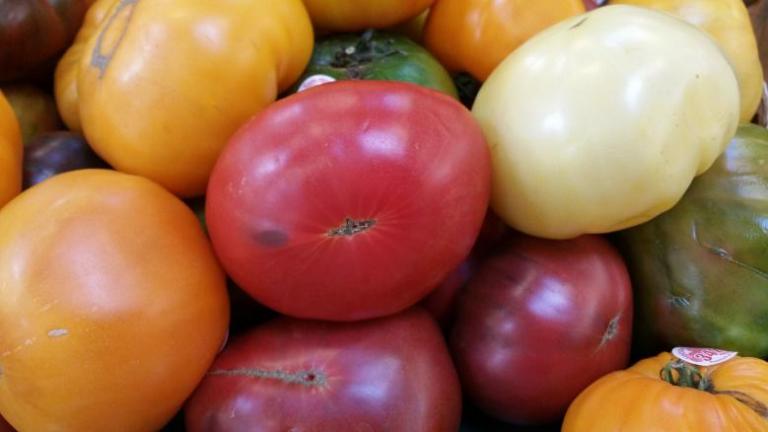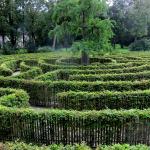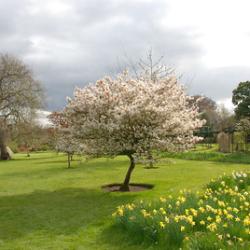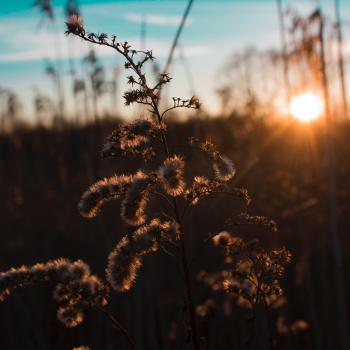
Hecate
from the book Gaia’s Cry by Nan Lundeen
Slim with curly brown hair,
Elijah is five
and he can handle a scissors.
He clips the seed packet
and pours the promise
of bachelor buttons into a bowl.
His small fingers pinch
the seeds, scatter them in
a cup of dirt. Then candytuft,
morning glory, marigold
and for good measure, basil and sage,
some tiny and black, some
like two-toned arrows.
The crone tells him a story—
a garden, a girl and a grandmother
planting beans, squash, radishes, watermelon
every spring in rich Iowa soil.
She leans toward his ear—
we set in onions during
the dark of the moon.
He finds a black-and-white photo
of his great-great grandmother Mathilda
in the sunroom near the seed table—
twinkling eyes behind rimless glasses,
hair she crimped
with a curling iron back in a bun,
her Swedish features—the aquiline nose,
the strong chin—and at the V in her
black dress, an oval pearl brooch.
You planted seeds with her?
Yes, just like you and me.
They place the cups on the table
by the windows. Plants need
sunlight to make food, the crone
tells him. And water, he says, proud
that he knows a secret of life.
Yes, and water. He pours from
the pitcher, careful not to spill.
His next visit, he runs
to the sunroom and finds magic—
leaves stretching toward light!
Some round, some heart-shaped,
others double-lobed, tiny, or wide. All
bright soft green
springing from a very old tradition.
The crone’s blessing:
one day when she is
a memory in a frame
Elijah and his child’s child
will rediscover the magic of seeds.
Have you noticed that raw carrots and celery that you buy from the grocery store are a bit tougher, requiring greater bite power than say a decade ago? This may be because those veggies have been genetically engineered to produce tougher stalks. Stiffer carrots, for instance, can be yanked from the ground by big machines without breaking.
A few years ago, my husband and I wanted to can tomato juice as our mothers had, so I bought tomatoes at farmers’ stands to try out the taste. I dreamed of the ripe, juicy, robust tomatoey taste of my childhood, only to be disappointed that farm stand tomatoes didn’t taste any better than grocery store tomatoes. The flavor had been engineered out to make room for genes that would produce tomatoes with thicker skins and more reliably round fruit to help them survive trips to market while still looking handsome in the produce section of the grocery store.
The solution to my conundrum is to grow heirloom tomatoes and save seeds for the following year.
Heirloom seeds, according to www.seedsavers.org, are seeds whose pedigrees are documented and have been pollinated by the wind, bugs or other natural means. The result: They “breed true,” carrying the original characteristics on to the following generations.
Seedsavers.org is the website for the nonprofit, Decorah, Iowa-based Seed Savers Exchange at Heritage Farm. In 1975, Diane Ott Whealy, a co-founder of Seed Savers, began with seeds brought to Iowa by her Bavarian great-grandparents in the 1870s, according to the website.
“Today, nearly 45 years later, we house the nation’s largest nongovernmental seed bank of its kind, where thousands of rare, heirloom varieties are safeguarded for generations to come—our children, and our children’s children,” the website states.
Seed Savers Exchange’s catalogue and online store offer open-pollinated seeds some of which are heirloom. None are created in a laboratory as are genetically modified organism (GMO) seeds.
I downloaded a garden planning chart from the website and intend this winter to get cozy under a warm quilt and plan a non-GMO garden from which I can save seeds to use again the following year. When I looked into this, I discovered it isn’t as easy as it sounds. You have to plant different varieties of the same species separate from one another even if they produce different crops because if they cross-pollinate, they won’t breed true the following year.
For instance, broccoli and cabbage belong to the same species and can mess each other up, losing individual characteristics.
But, why bother?
Because with the continued engineering of plants, the gene pool shrinks, and global warming requires plants, which are a huge percentage of our food supply, to be adaptable. Some rare and heirloom seeds are resistant to certain diseases. The more diverse the genetic makeup, the more adaptable and the safer the food supply will be for future generations.
Seed Savers Exchange members buy and sell thousands of homegrown, heirloom and open-pollinated seeds. All are non-hybrid, meaning they will reproduce “true.”
At Samhain, it is my custom to honor the crone, the wise elder who stands at crossroads. We residents of planet Earth indeed face a crossroads. Scientists and world leaders, such as UN Secretary-General António Guterres, are sounding the alarm that we must immediately and drastically reduce greenhouse gases or suffer severe consequences.
One way we can support life on Earth is to ensure our agricultural biodiversity. Just as the crone carries generations of wisdom, so do seeds.


















